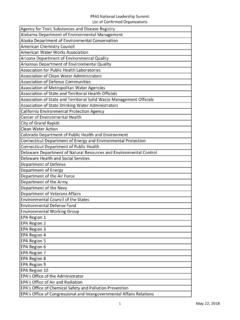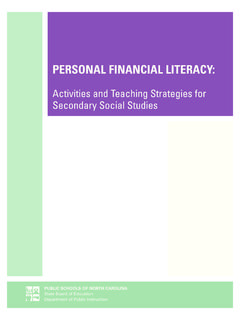Transcription of Sustainable Land Management in Practice
1 S ustaina b le B A C K G R O U N D. The designations employed and the presentation of material in this information product do not imply the expression of any opinion whatsoever on the part of the Food and Agriculture Organization of the United Nations (FAO) concerning the legal or development status of any country, territory, city or area or of its authorities, or concerning the delimitation of its frontiers or boundaries. The mention of specific companies or products of manufacturers, whether or not these have been patented, does not imply that these have been endorsed or recommended by FAO in preference to others of a similar nature that are not mentioned. The views expressed in this information product are those of the author(s). and do not necessarily reflect the views of FAO. ISBN 978-92-5-000000-0. All rights reserved. FAO encourages reproduction and dissemination of material in this information product.
2 Non-commercial uses will be authorized free of charge, upon request. Reproduction for resale or other commercial purposes, including educational purposes, may incur fees. Applications for permission to reproduce or disseminate FAO copyright materials, and all queries concerning rights and licences, should be addressed by e-mail to or to the Chief, Publishing Policy and Support Branch, Office of Knowledge Exchange, Research and Extension, FAO, Viale delle Terme di Caracalla, 00153 Rome, Italy. FAO 2011. 2 11:12. Sustainable land Management in Practice Guidelines and Best practices for Sub-Saharan Africa Authors: Hanspeter Liniger, Rima Mekdaschi Studer, Christine Hauert, Mats Gurtner Under FAO coordination Technical Editor: William Critchley Charts and Maps: Ulla G mperli, Simone Kummer, Chris Hergarten Layout: Simone Kummer Citation: Liniger, , R. Mekdaschi Studer, C. Hauert and M. Gurtner.
3 2011. Sustainable land Management in Practice Guidelines and Best practices for Sub-Saharan Africa. TerrAfrica, World Overview of Conservation Approaches and Technologies (WOCAT) and Food and Agriculture Organization of the United Nations (FAO). Cover photo: Sustainable land Management practiced on small-scale farms in Machakos, Kenya: Protection of erosion-prone slopes through hand-dug terraces in combination with agroforestry (Hanspeter Liniger). 3 11:12. Table of Contents Foreword 7. Acknowledgments 9. Abbreviations and acronyms 10. Executive summary 11. Part 1: Guiding principles Introduction 16. Setting the frame 16. Aims and audience 17. Structure and sources 17. Focus on Sub-Saharan Africa 18. Focus on Sustainable land Management 18. Principles for best SLM practices 21. Increased land productivity 21. Water use efficiency 22. Soil fertility 28. Plants and their Management 30. Micro-climate 32.
4 Improved livelihoods 32. Costs and benefits 33. Input challenges for land users 33. Improved ecosystems: being environmentally friendly 34. Prevent, mitigate and rehabilitate land degradation 34. Improve biodiversity 36. Climate change: a fresh challenge a new opportunity? 37. Triple-win solutions 41. doption and decision support for upscaling best practices A 43. Adoption - uptake and spread 43. Institutional and policy framework 44. Participation and land use planning 46. Promotion and extension 47. Monitoring, assessment and research 48. Decision support - upscaling SLM 50 Knowledge Management : building the basis 50. Selection and fine-tuning of SLM practices 51. Selection of priority areas for interventions 51. Conclusions for adoption and decision support 52. The way forward 53. 5. 5 11:12. C O N T. T A B L E O F C O N T E N T S. Part 2: Best SLM practices for Sub-Saharan Africa Overview of SLM practices 58.
5 SLM technology groups and case studies 61. Integrated Soil Fertility Management 62. Conservation Agriculture 76. Rainwater Harvesting 88. Smallholder Irrigation Management 100. Cross-Slope Barriers 114. Agroforestry 126. Integrated Crop-Livestock Management 142. Pastoralism and Rangeland Management 156. Sustainable Planted Forest Management 170. Sustainable Forest Management in Drylands 182. Sustainable Rainforest Management 192. Trends and New Opportunities 202. SLM Approaches and case studies 215. SLM Approaches 216. Annex: Best SLM practices compared 235. 6 Sustainable land Management in Practice 6 11:12. F O REW O R D. land is the true of wealth of Sub-Saharan Africa (SSA). The region is characterized by a very rich diversity of natural ecosystem resources, including soils, vegetation, water and genetic diversity. Together, these constitute the region's main natural capital. It is from these assets that the provision of food, water, wood, fibre and industrial products, and essential ecosystem services and functions are derived.
6 And they must be maintained in order to support African populations into the future. Simultaneously, it is from the land that 60 percent of the people directly derive their livelihoods - from agriculture, freshwater fisheries, forestry and other natural resources (FAO 2004). However, African land and water resources in some areas are seriously threatened through overuse although per capita availability is one of the highest in the world. This is a direct result of the increasing needs of a growing population, combined, often, with inappropriate land Management practices . Thus, on the one hand, the African population is growing at over two percent a year (FAO 2008), requiring a doubling of food production by 2030 to keep pace with demand; on the other hand, productivity of natural resources is in general in decline. Additionally, the number of natural disasters has increased and climate change is already taking its toll.
7 A new system of Management and governance of land resources is urgently needed; one that is able to respond in a systematic and integrated manner to this key development challenge. Sustainable land Management (SLM) is a comprehensive approach, with the potential of making very significant and lasting differences in the near future, and over the long-term. But what is Sustainable land Management exactly? What are the principles, and above all, the practices that people can use? How can it make a real difference and provide concrete solutions for Africa? These are the key questions that this book wishes to address - and answers are provided through the case studies and analyses. These guidelines have been developed based on FAO's and WOCAT's extensive experience. The book draws, in particular, on WOCAT's network and its database of SLM knowledge - as well as on WOCAT's first overview book entitled Where the land is greener'.
8 These guidelines were implemented in the framework of the TerrAfrica partnership, whose main objective is to mainstream and upscale SLM in SSA, through the leveraging and harmonising of multisectoral investments at the local, country, subregional and regional levels. This book is aimed at giving a strong boost to the adoption of SLM on the African continent. It is based on scientific and technical as well as practical and operational knowledge. It was written to provide clear guidance to countries, regional institutions and programmes, development partners and land users organizations that are ready and eager to change present investments towards a more Sustainable direction. The book presents 13 major groups of SLM technologies and approaches in a user-friendly manner, exemplified by 47 case studies from all over the region. It should be emphasized that, although comprehensive, these practices are not intended to be prescriptive or top-down, and in most cases can be improved and tailored to different situations.
9 Users are therefore encouraged to adapt and modify them, based on specific conditions, integrating local knowledge and ingenuity. Furthermore, the book addresses environmental issues that are the most pressing for SSA: thus not just combating land degradation, but also preserving ecosystem functions, ensuring food security, securing water resources within the land and confronting the climate change issues of adaptation and mitigation. Typical situations in SSA are addressed, and the potential for major contributions to improved livelihoods is emphasized. Foreword 7. 7 11:12. It is expected that on-going major initiatives, such as country programmes and investment operations supported by TerrAfrica, national action plans and sector investment strategies, the Comprehensive Africa Agriculture Development Programme (CAADP) planning, as well as forest, water resources and climate change initiatives will facilitate operationalization and upscaling of these practices through multi-stakeholder partnerships.
10 It is hoped that all stakeholders will benefit from the invaluable information contained in this guide and participate in the TerrAfrica partnership to expand and document the state of the knowledge. Jacques Diouf FAO Director-General 8 Sustainable land Management in Practice 8 11:12. A C K N O W LEDGM ENTS. This volume is a core knowledge product for the TerrAfrica platform, prepared under the Food and Agriculture Organi- sation's (FAO) leadership, and financed by the multi-donor TerrAfrica Leveraging Fund, the World Bank, FAO, Swiss Development Cooperation (SDC) and World Overview of Conservation Approaches and Technologies (WOCAT). These guidelines were prepared by Hanspeter Liniger, Rima Mekdaschi Studer, Christine Hauert and Mats Gurtner, initiated and coordinated by Dominique Lantieri of FAO, edited by William Critchley, CIS, VU-University Amsterdam and received sup- port, technical contributions and reviews from Steve Danyo of the World Bank and Sally Bunning of FAO.













